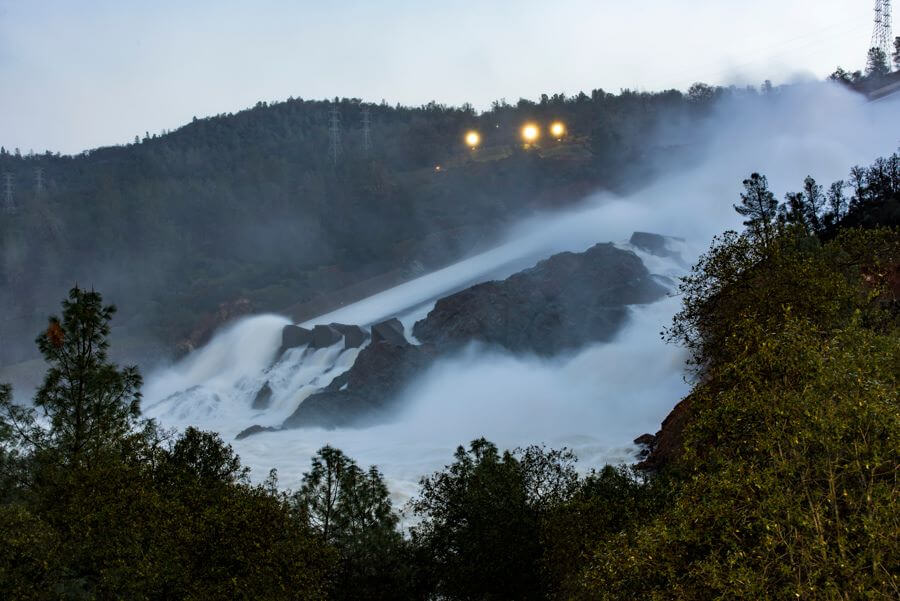By David Guy
As we watch the beginning of summer unfold, the water management challenges in California are presenting themselves in a way that should be instructive to the policy discourse on water. The nature of California, with the maldistribution of water in time and place, coupled with seemingly more extreme weather events, suggests some new opportunities to advance a more modern water management system that better adapts to a changing climate and our state’s important values.
As a backdrop for future water management, we should acknowledge that Californians have built a highly managed water system that has served the state well, recognizing our system is under strain for several reasons: an aging infrastructure, a better understanding of the consequences this infrastructure has created, the evolving values in California water, and an increasing recurrence of droughts, floods and fires. We live in a special place where our water management must evolve in tandem and in sync with both the needs of California and our climate. As we look to the future, our current population of 40 million will grow to 50 million by 2050; we are blessed with the most abundant agricultural bounty in the world; we are surrounded by a stunning landscape and related natural infrastructure; California is the 5th largest economy in the world; and people pursue endless recreational opportunities surrounding water in every part of the state. Water is essential for all of these special features that define California. A balanced and contemplative approach that embraces and then enhances California’s unique values in water is needed for this great state to continue to protect and enhance our communities, economy, and environment.

As we look at 2023, we can visualize the importance of good wet-year water management and the need to first manage our flood protection system for public health and safety. We should also strategically capture the abundance of water in an environmentally responsible manner when it is available so we can have water in both reservoirs and groundwater aquifers for use at a later time when needed, not knowing when we may need this precious water. We appreciate the Public Policy Institute (PPIC) and others who are exploring new ways to work together to better manage water in wet years. See the PPIC hosted panel discussion here. We also appreciate the urgency in the policy arena to accelerate and modernize California’s water management system to better serve people, farms, fish and wildlife, and recreation.
There was also much to learn from our recent dry years in California, which similarly revealed the importance and need to better prepare for dry-year water management. Expanding and modernizing our water infrastructure in new and different ways than we have in the past is a must-do for California’s future. This modern infrastructure should include maximizing the use of our existing reservoirs, select new water storage (such as the Sites off-stream reservoir and Sacramento Regional Groundwater Bank), groundwater recharge, and ensuring access to safe drinking water for all our communities. We have also learned the value of water on the landscape for farms, fish and wildlife and groundwater recharge as we both explore and implement the reactivation of our historic floodplains, watershed management with a focus on forest health, and healthy farms and soils. We cannot meet our future water demands without modernizing our infrastructure, both traditional and nature-based solutions, while stretching our available water supplies during these times. We also support and have encouraged practical efforts to improve the water rights system, in both dry and wet years, as seen in Observations on a Modern Water Rights System in the Sacramento Valley.

In sum, we are blessed in California to have many of the best water resources managers in the world. They devote their lives to understanding and continually learning about this dynamic, as we know that every water year is different and serving water for multiple benefits is hard work that calls upon the expertise of every discipline surrounding water. Yes, like movie critics who have never made a film, it is easy to sit in the theatre and critique the actions of water managers without the benefit of this expertise and the context for the various tradeoffs that inevitably stare at each and every water management decision in California. As we enter the summer season and the policy discourse between dry and wet years, we should look at the issues through the lens of a water resources manager and focus on improving the various tools that water resources managers use and have available to manage our precious water supplies for multiple benefits. Our measure of success will follow whether we meet this objective.
We would welcome further conversations and ideas to better manage water through different years at info@norcalwater.org.




